What to See in London
Some of the places that you must see are mentioned below. All these places have a entry fee of 20 - 5 pounds however With London pass all these are for you to see for FREEEEEEEE
Alexander Fleming Laboratory Museum
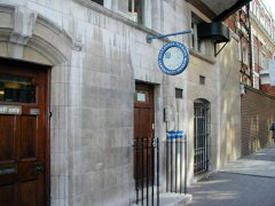 Discover
for yourself the secrets of the laboratory in which Alexander Fleming discovered
penicillin in 1928. An in-situ reconstruction of the laboratory, displays and a
video uncover the remarkable story of how a chance discovery became a lifesaving
drug destined to revolutionise medicine. The extensive archives of St Mary's
Hospital are also open for research.
Discover
for yourself the secrets of the laboratory in which Alexander Fleming discovered
penicillin in 1928. An in-situ reconstruction of the laboratory, displays and a
video uncover the remarkable story of how a chance discovery became a lifesaving
drug destined to revolutionise medicine. The extensive archives of St Mary's
Hospital are also open for research.
Admission Details
- Open Monday-Thursday 10.00-13.00
- Open at other times by appointment only (Monday-Thursday 14.00-17.00 and Friday 10.00-17.00).
- Closed on public holidays.
- nearest train station:
Paddington 0.1 miles (0.2 km)
Apsley House
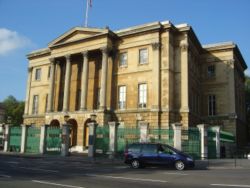 Apsley
House was the London residence of the Dukes of Wellington and stands alone at
Hyde Park Corner, on the south-east corner of Hyde Park, facing south towards
the busy traffic circulation system. The house is now run by English Heritage
and is open to the public as a museum and art gallery, although His Grace the
current Duke of Wellington still uses part of the building as a part-time
residence. It is sometimes referred to as the Wellington Museum. It is perhaps
the only preserved example of an English aristocratic town house from its
period. The practice has been to maintain the rooms as far as possible in the
original style and decor. It contains the 1st Duke's collection of paintings,
porcelain, the silver centrepiece made for the Duke in Portugal, c 1815,
sculpture and furniture. Antonio Canova's heroic marble nude of Napoleon holding
a gilded Nike in the palm of his hand, made 1802-10, standing 3.45 metres to the
raised left hand. It was set up for a time in the Louvre and was bought by the
Government for Wellington in 1816 (Pevsner) and stands in Adam's Stairwell
Apsley
House was the London residence of the Dukes of Wellington and stands alone at
Hyde Park Corner, on the south-east corner of Hyde Park, facing south towards
the busy traffic circulation system. The house is now run by English Heritage
and is open to the public as a museum and art gallery, although His Grace the
current Duke of Wellington still uses part of the building as a part-time
residence. It is sometimes referred to as the Wellington Museum. It is perhaps
the only preserved example of an English aristocratic town house from its
period. The practice has been to maintain the rooms as far as possible in the
original style and decor. It contains the 1st Duke's collection of paintings,
porcelain, the silver centrepiece made for the Duke in Portugal, c 1815,
sculpture and furniture. Antonio Canova's heroic marble nude of Napoleon holding
a gilded Nike in the palm of his hand, made 1802-10, standing 3.45 metres to the
raised left hand. It was set up for a time in the Louvre and was bought by the
Government for Wellington in 1816 (Pevsner) and stands in Adam's Stairwell
Address: Apsley House - W1J 7NTRoad Access:149 Piccadilly, Hyde Park
Corner
Train Access:Victoria 1⁄2 mile
Bus Access: From surrounding areas
Tube Access: Hyde Park Corner,
Telephone:020 7499 5676
Banqueting House
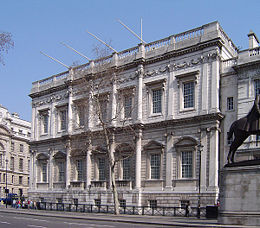 The
Banqueting House is the only remaining component of Whitehall Palace, and is
found at the Trafalgar Square end of Whitehall, London.
The
Banqueting House is the only remaining component of Whitehall Palace, and is
found at the Trafalgar Square end of Whitehall, London.
It is the grandest and most familiar survival of the architectural genre of
banqueting house. Formerly part of the Palace of Whitehall, it was designed by
Inigo Jones in 1619 and completed in 1622 with assistance from John Webb. In
1649 King Charles I of England was executed on a scaffold in front of the
building.
Inside the building there is a single two-story double-cube room which is
decorated with paintings by Sir Peter Paul Rubens that were commissioned by
Charles I in 1635 to fill the paneling of the ceiling. Rubens's painting depicts
the Apotheosis of James I. The Banqueting House introduced a refined Italianate
Renaissance style that was unparalleled in Jacobean England, where Renaissance
motives were still filtered through the engravings of Flemish Mannerist
designers. The roof is all but flat and the roofline is a balustrade. On the
street facade all the elements of two orders of engaged columns, Corinthian over
Ionic, above a high rusticated basement, are locked together in a harmonious
whole.
The Banqueting House was probably planned as part of a grand new Palace of
Whitehall, but the tensions that eventually led to the Civil War intervened. In
1685 the Banqueting House became the first building in England to use crown
glass in its windows. Later, in the fire that destroyed the old Whitehall Palace
the isolated position of the Banqueting Hall preserved it from the flames.
The Undercroft was originally designed as a drinking den for James I and a place
where he could escape the rigors of public life. The King would come here to
savour a glass of wine from his extensive cellars, or simply enjoy some private
time with his favorite courtiers.
Benjamin Franklin House
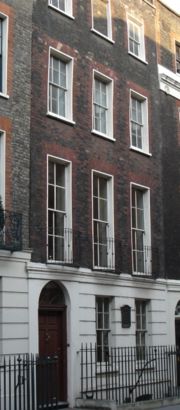 Benjamin
Franklin House is a museum in a terraced house in Craven Street, London, close
to Trafalgar Square. It is the only surviving former home of Benjamin Franklin,
one of the Founding Fathers of the United States. The house dates from circa
1730 and Franklin lived and worked there for sixteen years.
Benjamin
Franklin House is a museum in a terraced house in Craven Street, London, close
to Trafalgar Square. It is the only surviving former home of Benjamin Franklin,
one of the Founding Fathers of the United States. The house dates from circa
1730 and Franklin lived and worked there for sixteen years.
Conservation
36 Craven Street retains a number of original features (include original
floorboards, original ceilings, and original fireplaces) with relatively few
later alterations. Current conservation policies emphasise the need for minimal
modern interventions.
Modern facilities
The "Historical Experience" includes an actor portraying historical characters
associated with the house along with dialog, sound, lighting and special
effects. The character used in the "Historical Experience" is Polly Hewson,
daughter of Franklin's landlady who became a "second daughter" to Franklin.
The "Student Science Centre" allows students to re-create experiments from
Franklin's sojourn in London. It includes a Medical History Room (focused on the
medical research work of William Hewson), a Discovery Room (containing
historical artifacts) and a Demonstration Room (in which students can replicate
Franklin's experiments).
The "Scholarship Centre" on the top floor of the House is a centre for study of
the many subjects Franklin pursued
Britain at War Experience
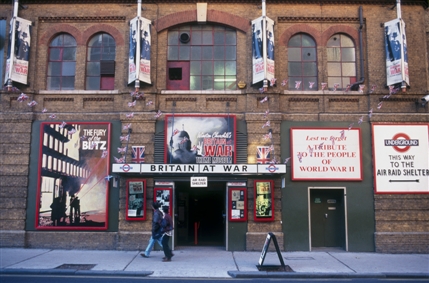 The
Second World War was the most turbulent and eventful period in the history of
the 20th century. It affected the lives of millions of people all over the
world, advanced technology and changed political boundaries and ideas of human
behaviour. But what was it really like? How did it really feel to be a British
citizen during the Second World War? What did people eat and wear? Winston
Churchill's Britain at War Theme Museum can answer these questions and many
more.
The
Second World War was the most turbulent and eventful period in the history of
the 20th century. It affected the lives of millions of people all over the
world, advanced technology and changed political boundaries and ideas of human
behaviour. But what was it really like? How did it really feel to be a British
citizen during the Second World War? What did people eat and wear? Winston
Churchill's Britain at War Theme Museum can answer these questions and many
more.
Get the closest possible insight into what life was really like. The Britain at
War Experience recreates the LONDON BLITZ in all its fury with special effects
highlighting the sights and sounds, the artifacts, and even the dust and smoke
of an air raid at its height Take the lift to the London Underground air raid
shelter and see where thousands spent sleepless nights. Keep up to date with
wartime news in the underground cinema or read it in the memorable news pages.
Enter the BBC radio studio and tune into Rome, Washington, London and Berlin for
the latest messages from Churchill, Chamberlain, Roosevelt, Ed Murrow, Hitler
and Lord Haw Haw. Specifically designed to tie in with National Curriculum
especially KS2-3. Primary and secondary education packs available include
worksheets, activities, questions for the visit and a guide book. Special
'dressing up' sessions for school parties including tin helmets, gasmasks and
uniforms. *Free preliminary visits for teachers and help with planning visits.*
Huddle in an Anderson shelter and hear all the terrifying noises of an air raid
overhead. See the Drury Lane dressing room and catch a glimps of the "spirit of
the times" reminding you of the stars of the war years. Look in at Rainbow
Corner - a club to entertain the GI's with "Varga" pinups. See real wartime
bombs, rare documents and photographs in the unique Bomb Disposal display...you
can even hear a ticking bomb. Learn about the Land Army Girls and other "women
at war" who fought their battles on the Home Front. Window shop along the little
shops of Southwark and see prices in pounds, shillings and pence. See how people
coped with food and clothing rationing. Share the excitement and anxiety of the
evacuees as they wait to be transported to new homes. Gas masks, ration
books..it's all here factually presented, realistically portrayed. An exciting
and educational adventure for all ages.
Britain at War Experience, 64-66 Tooley Street, London SE1
020 7403 3171
Open: 7 days a week:
April-October: 10.00-17.00
November-March: 10.00-16.30
(last entry 1 hour before closing)
Cartoon Museum
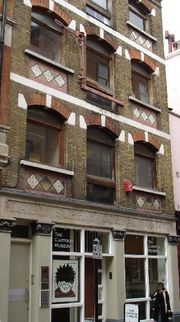 The
Cartoon Museum is a museum in London for political cartoons, comic strips and
books. As well as holding a collection of cartoons it has a library of over 3000
books relating to the subject.
The
Cartoon Museum is a museum in London for political cartoons, comic strips and
books. As well as holding a collection of cartoons it has a library of over 3000
books relating to the subject.
The museum features over 1200 exhibits, and is, as of 2006, curated by Anita
O'Brien, who noted "There has never been a cartoon museum here... In spite of
the very strong historical tradition here, there has always been a very strong
ambivalence towards comic art." [1] It was opened on the 23 February 2006 by the
Duke of Edinburgh.[2] In its mission statement the museum declares itself
"dedicated to preserving the best of British cartoons, caricatures, comics and
animation, and to establishing a museum with a gallery, archives and innovative
exhibitions to make the creativity of cartoon art past and present, accessible
to all for the purposes of education, research and enjoyment.
Address: 35 Little Russell Street
London
WC1A 2HH
Telephone: +44 (0)20 7580 8155
Chelsea Cinema
Chelsea FC Stadium Tour
Chelsea Physic Garden
Chislehurst Caves
Churchill Museum & Cabinet War Rooms
City Cruises
The Courtauld Gallery
Curzon Mayfair Cinema
Curzon Soho Cinema
Eltham Palace
Estorick Collection of Modern Italian Art
Eton College
Fan Museum
Firepower Royal Artillery Museum
Florence Nightingale Museum
Foundling Museum
Guards Museum
Hampton Court Palace
Handel House Museum
Household Cavalry Museum
HMS Belfast
Jason's Canal Boat Trip
Jewel Tower
Kensington Palace & The Orangery
Kew Bridge Steam Museum
Kew Gardens
London Bicycle Tour Company
London Canal Museum
London Wetland Centre
London Zoo
Museum of Brands, Packaging and Advertising
Museum in Docklands
Museum of Rugby
National Theatre Backstage Tours
Pollocks Toy Museum
Queen's Gallery
QUEENS Ice & Bowl
Renoir Cinema
Royal Albert Hall
Royal Mews
Shakespeare's Globe Theatre
Tour & Exhibition
St Paul's Cathedral
Tate Britain
Tate Modern
Tower Bridge Exhibition
Tower of London
Wellington Arch
Wernher Collection at Ranger's House
Wimbledon Lawn Tennis Museum
Wimbledon Tour Experience
Windsor Castle